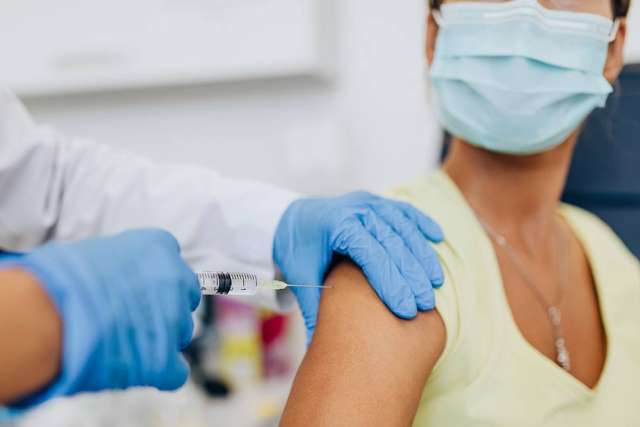Flu season and the pandemic are about to collide.
It’s possible to catch both viruses at the same time. Although there is no vaccine yet for COVID-19, the flu vaccine is widely available — and highly recommended by doctors. It’s the best way to protect yourself from the flu and avoid life-threatening illness.
By getting the vaccine, you’re also helping to protect the most vulnerable.
Wide acceptance of the flu vaccine can help prevent the health care system from being overtaxed, a particular concern as providers continue to care for people with COVID-19. It can also mean fewer people will be hospitalized for flu, likewise freeing up critical resources for people with the novel coronavirus.
The flu vaccine also will reduce symptoms that might be confused with those of COVID-19. Because many symptoms of influenza and COVID-19 are nearly indistinguishable, fewer flu cases means fewer COVID-19 tests will be required.
Getting your flu shot is essential
The flu vaccine is updated annually to match the types of flu viruses that are circulating in a given year. Although receiving a flu vaccine doesn’t guarantee you won’t contract the illness, it does reduce your risk of becoming ill in that flu season by 40% to 60%. Other benefits of vaccination include:
- Faster recovery: Studies show people who received a flu shot and were hospitalized for flu spent four fewer days in the hospital on average than those who were not vaccinated. They were also 59% less likely to need ICU-level care.
- Fewer heart events: People with cardiac disease may experience fewer heart problems related to flu when they receive the flu vaccine.
- Protection of pregnant women: Pregnant women who got their flu shot reduced their risk for flu-associated respiratory infection by 50%. It also protects babies for several months after birth.
How is the vaccine selected each year?
The World Health Organization and the Centers for Disease Control and Prevention (CDC) identify the flu viruses for each year’s vaccines based on the circulating flu viruses during the Southern Hemisphere’s flu season, which occurs before the Northern Hemisphere’s flu season.
Four vaccinations were ordered for all UCLA Health hospitals and ambulatory clinics. They all cover the four most likely strains of flu virus expected this season.
Who should get a flu shot?
While everyone age 6 months or older should get a flu shot, it is especially important for these individuals:
- Adults age 65 and older
- Women who are pregnant or may become pregnant
- People with chronic conditions including asthma, heart disease and diabetes
- Individuals who are immunocompromised, for example those with HIV/AIDS or cancer
- Caregivers of at-risk people
When should you get a flu shot?
The ideal time to get your flu shot is September or October, which is early in the flu season, because it takes about two weeks after the vaccination for antibodies to develop to provide protection against the flu. Getting the vaccine any earlier is not recommended by the CDC because it may lead to reduced protection later in the flu season. The flu season may extend well into 2021 (some seasons have continued into May), so the vaccination will remain available at least into January.
Similarities and differences between COVID-19 and flu?
Influenza and COVID-19 are caused by different viruses, but they have many of the same symptoms:
- Cough
- Fatigue
- Fever (100.0 F) or chills
- Headache
- Muscle pain or body aches
- Nasal congestion or runny nose
- Nausea, diarrhea or vomiting (more common in children)
- Shortness of breath or difficulty breathing
- Sore throat
One symptom unique to COVID-19 is the loss of a sense of taste or smell.
The CDC has developed a test that can diagnose flu and COVID-19 at the same time. The U.S. Food and Drug Administration has authorized the production of this test so it is available to health care providers.
A combined COVID-19 PCR (polymerase chain reaction) and Influenza PCR is being developed, using a single nasopharyngeal swab sample. It is expected to be available beginning in October.
How to safely get the flu vaccine during a pandemic
When visiting your flu shot provider, follow prevention guidelines such as physical distancing and wearing a face covering. The provider will minimize the chance of COVID-19 transmission by:
- Screening patients for COVID-19 symptoms
- Ensuring you and staff members properly wear face coverings
- Practicing cough etiquette by coughing into one’s elbow, as well as hand hygiene
Contact your primary care physician to schedule your flu vaccine. Learn more about flu prevention.



